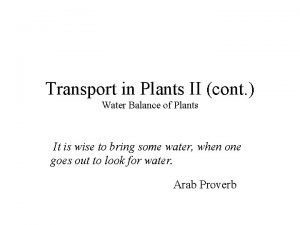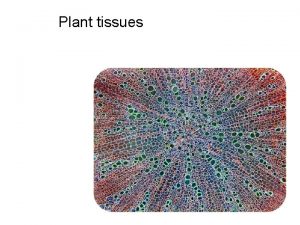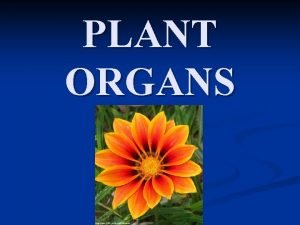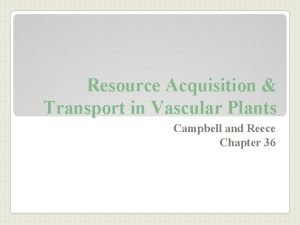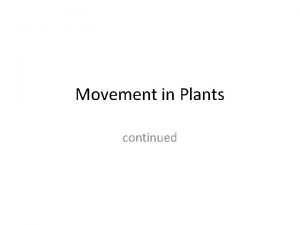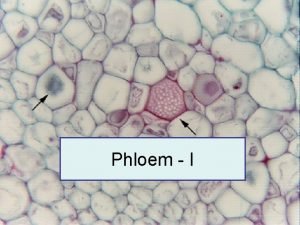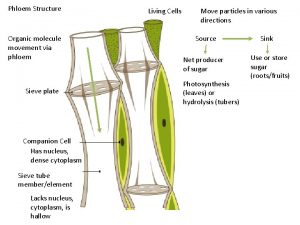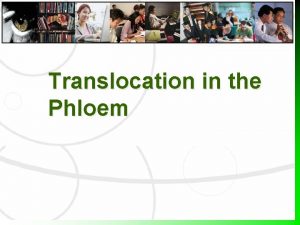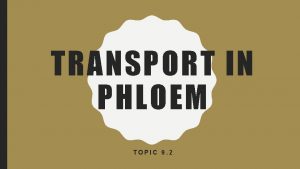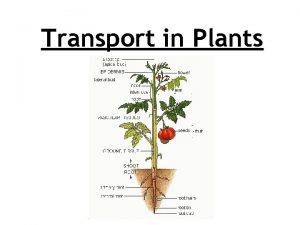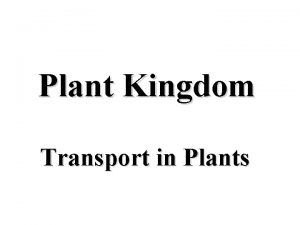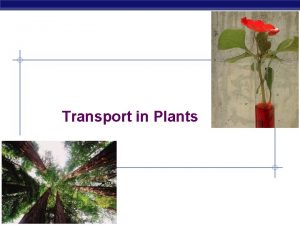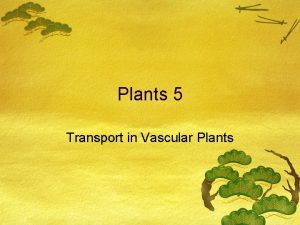Mass Transport in Plants the Phloem What is













- Slides: 13

Mass Transport in Plants: the Phloem

What is translocation? Translocation is the movement of nutrients around a plant. The term includes the movement of minerals, which can be dissolved in water and transported in the xylem, but usually refers to the transport of sugars, amino acids, and other organic molecules in the phloem. Translocation can occur in either direction in the phloem – it is bidirectional. It is an active process, requiring energy, unlike water transport in the xylem. 2 of 26 © Boardworks Ltd 2008

Phloem as seen under a light microscope

The mass flow hypothesis The most widely accepted explanation of sap movement in plants is the mass flow hypothesis (sometimes called the pressure flow hypothesis). According to theory, sap moves through phloem vessels due to differences in hydrostatic pressure. Evidence for this effect includes the excretion of sap, or honeydew, by an aphid when it taps a phloem vessel to feed. The sap is forced through the aphid’s body, demonstrating that the sap in the phloem is under pressure. 4 of 26 © Boardworks Ltd 2008

Translocation of sugars 5 of 26 © Boardworks Ltd 2008

6 of 26 © Boardworks Ltd 2008

7 of 26 © Boardworks Ltd 2008

Ringing Experiments • Evidence for water movement in xylem and sugar movement in phloem. • Woody stems have an outer protective layer of bark, with a ring of phloem inside and a ring of xylem inside that. • Outer layers of bark and phloem are removed from a section of stem. 8 of 26 © Boardworks Ltd 2008

Ringing Experiments 9 of 26 • Stem above missing tissue ring swells with liquid rich in sugars. • Non-photosynthetic tissues below the ring wither and die. © Boardworks Ltd 2008

Ringing experiments Conclusions • Sugars of phloem accumulate above ring as they are unable to move down the stem. • Sugars don’t pass below the ring so tissues die. Phloem, rather than xylem, is responsible for the translocation of sugars in the plant. 10 of 26 © Boardworks Ltd 2008

Tracer experiments • Radioactive carbon isotope 14 C is used to make 14 CO. 2 • The 14 C is incorporated into the sugars produced during photosynthesis. • Autoradiography allows tracking of these sugars. Radioactive areas correspond to areas of phloem, not xylem. 11 of 26 © Boardworks Ltd 2008

12 of 26 © Boardworks Ltd 2008

13 of 26 © Boardworks Ltd 2008
 Transport in plants
Transport in plants Meristematic tissue flow chart
Meristematic tissue flow chart Phloem in plants
Phloem in plants Unlike passive transport active transport requires
Unlike passive transport active transport requires Bioflix activity membrane transport active transport
Bioflix activity membrane transport active transport Primary vs secondary active transport
Primary vs secondary active transport Primary active transport vs secondary active transport
Primary active transport vs secondary active transport Now answer the following questions
Now answer the following questions Bioflix activity membrane transport active transport
Bioflix activity membrane transport active transport Active vs passive transport venn diagram
Active vs passive transport venn diagram Active and passive transport
Active and passive transport Antiporter
Antiporter Bulk flow in phloem
Bulk flow in phloem Resource acquisition and transport in vascular plants
Resource acquisition and transport in vascular plants
